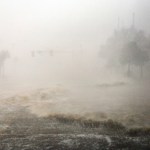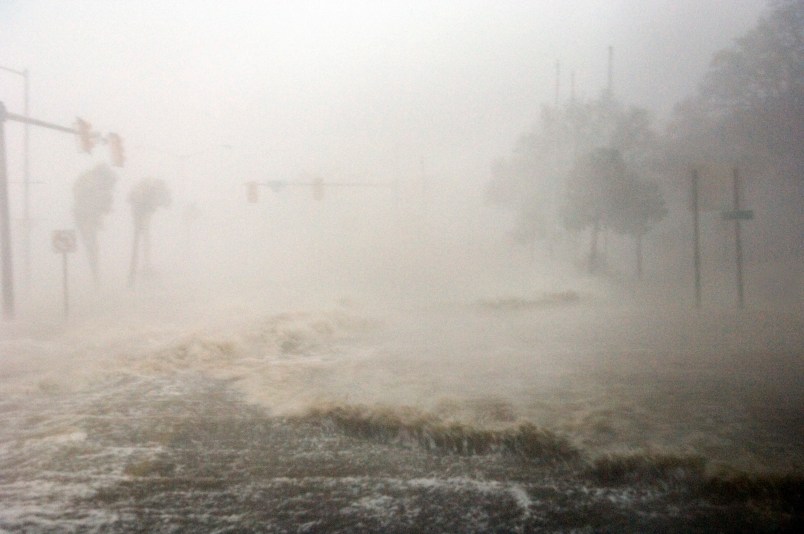1||In honor of Earth Day, NASA has compiled some of their most beautiful and captivating images of the third planet from the sun. Here, looking down at northwestern Africa from an off-centered vantage point, the Earth’s curvature is clearly shown, a rarity for ISS imaging which usually takes photos “nadir” meaning centered directly below the lens. This profile view also captures the hazy protective cocktail of nitrogen and oxygen, which make up Earth’s atmosphere. ||NASA/JPL/UCSD/JSC&&
2||The International Space Station happened to pass by The Sarychev Volcano on Russia’s Kuril Islands on June 12, 2009, allowing for this photo, which shows the early stages of an explosive eruption. The white cloud wrapping the plume is water condensation caused by the surrounding air rapidly rising and cooling. Note the lower denser cloud of ash spreading across the ground surrounding the volcano’s summit. ||NASA&&
3||This night view of Egypt shows the country’s population concentrated almost completely along the Nile river delta and valley. Cairo is the brilliantly bright cluster located right before the lights open up as as it approaches the Mediterranean Sea. ||NASA&&
4||The Susitna Glacier in Alaska reveals a long slow journey through what it’s picked up along the way. Revealed thanks to infrared, red and green wavelength false-color imaging, the red is vegetation and the brown dirt, the patches of blue show clean ice. ||NASA/GSFC/METI/ERSDAC/JAROS, and U.S./Japan ASTER Science&&
5||NASA’s Terra Satellite captured a 2008 total solar eclipse while rounding Siberia towards Norway. ||NASA&&
6||The southern tip of Eleuthera Island in the Bahamas.||NASA&&
7|| Botswana’s massive salt ponds are what make it one of Africa’s leading producers of soda ash (sodium carbonate) and salt, but the ponds also attract red, salt-loving algae. A deep red color shows medium and high salinity in the evaporating water. ||NASA&&
8||Larger in area than France and spreading across segments of Oman, Yemen and The United Arab Emirates, The Rub’ al Khali is one of the most expansive sand deserts in the world. ||NASA/GSFC/METI/ERSDAC/JAROS, and U.S./Japan ASTER Science Team&&
9||This now iconic composite image of Earth at night was made using over 400 different satellite images. Nasa uses these images to study weather in urban areas.||NASA&&
10||This temperate cyclone from 2001 has walls of dust thick enough to completely obscure the Chinese land surface below it, rising up to almost form its own topography as it spins counter clockwise. ||NASA&&
11||Dagze Co inland lake in Tibet.||NASA/GSFC/METI/ERSDAC/JAROS, and U.S./Japan ASTER Science Team&&
12||The Tien Shan mountain range, which extends approximately 1,550 miles from east to west across Central Asia. ||NASA&&
13||The result of atmospheric instability, cumulonimbus clouds like this one, shown above the continent of Africa, are usually associated with severe storms and extreme weather.||NASA&&
14||An absence of clouds offers a clear view of bright green hydrogen sulfide mixed with dust plumes blowing off the coast of Namibia toward the ocean.||NASA&&
15||3.9 million miles away, the Galileo spacecraft snaps a shot of the Earth and Moon together in a single frame.||NASA&&








